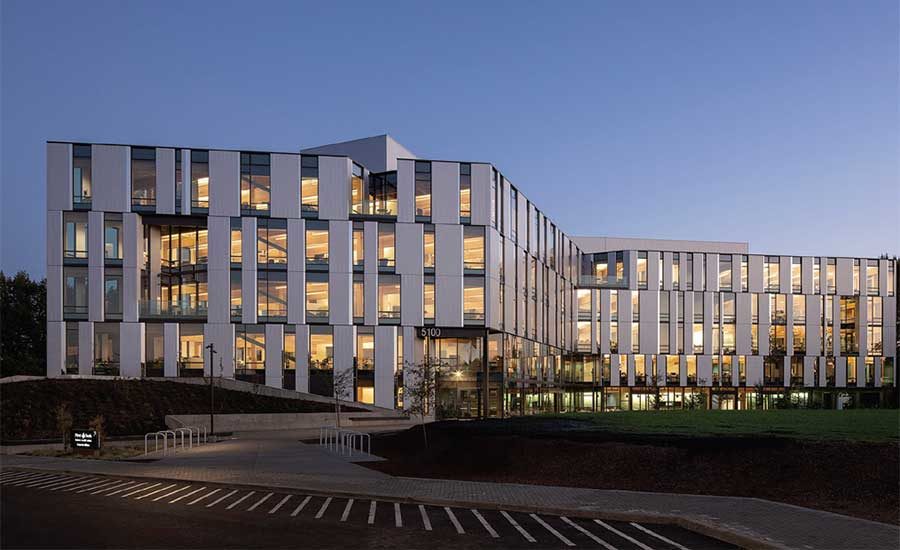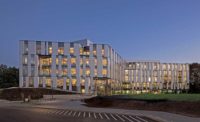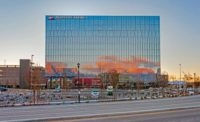Owner: First Tech Federal Credit Union
Lead Design Firm: Hacker
General Contractor: Swinerton Inc.
Civil Engineer: David Evans and Associates Inc.
Structural Engineer: Kramer Gehlen Associates Inc.
MEP Engineer: Glumac
Electrical Engineer: MKE & Associates
Though built as one of the largest mass timber projects in the country, the 156,000-sq-ft First Tech Federal Credit Union corporate office was erected in a relatively short time. Thanks to prefabrication, the glulam and cross laminated timber (CLT) building was assembled by a crew of eight in just 12 weeks once material arrived on site.
“Prefabrication allowed us to deliver the project four months faster than conventional construction and 4% cheaper,” says William Silva, Swinerton project executive.
Mass timber was selected as the structural system over concrete and steel for its financial and schedule advantages and for its biophilic qualities, the team says. The five-story LEED Gold building is located in the middle of a park. The owners wanted the timber frame design to promote health and comfort for employees while bringing in natural light and blurring the lines between the indoor and outdoor environment.
While mass timber has been widely used in Europe and Canada, it hasn’t been implemented on a cost-effective basis in the U.S. until this project, Silva says. “First Tech was a prototype to break the barriers to mass timber’s implementation in a cost-effective way on projects today,” he says.
Because CLT is new to the building code, there are no tested assemblies for fireproofing wood-to-steel connections. Scott Barton-Smith, associate principal with Hacker Architects, says the design team had to propose it to the city as an alternative that, although not written into the code, was structurally capable.
“One of the big challenges was working with manufacturers and code consultants to write engineering judgments to show that the connections that we were designing meet the intent of the code for fire rating purposes,” says Barton-Smith. “We had to interpolate information from different sources to write engineering judgments.”







Post a comment to this article
Report Abusive Comment